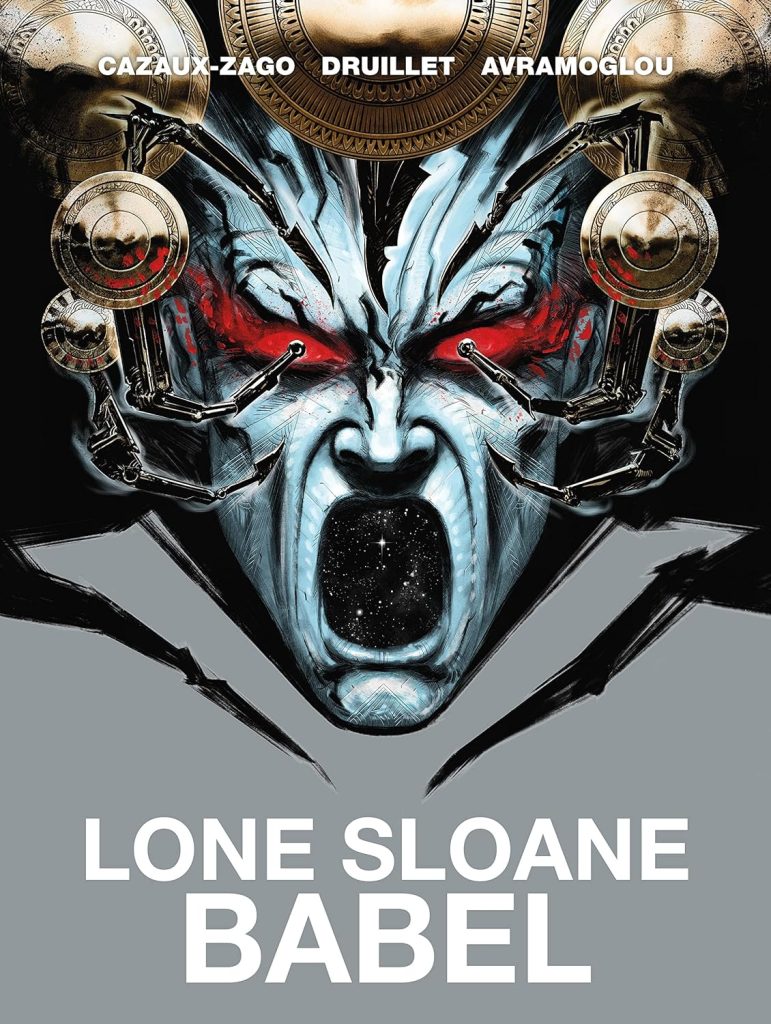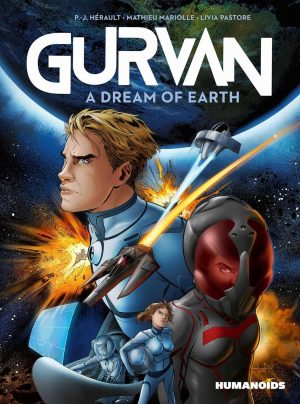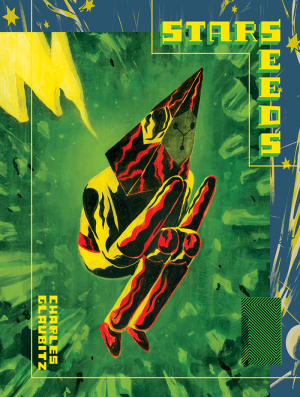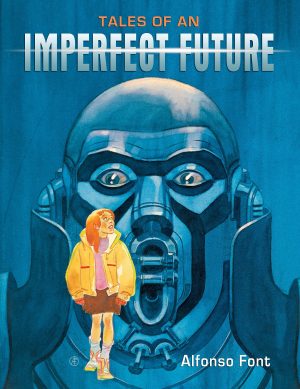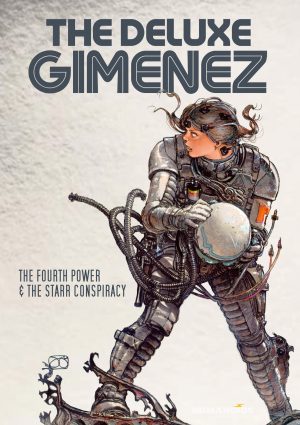Review by Ian Keogh
Babel begins with Philippe Druillet’s announcement of it being time to turn his Lone Sloane character over to a new generation of creators. After the extremely disappointing Delirius 2, that’s not a bad idea, but the surprise is that writer Xavier Cazaux-Zago and artist Dimitri Avramoglou have barely any comic credits between them.
In Avramoglou’s case the art tells its own story. It’s obviously influenced by Druillet’s wild visions, but only in the sense of exercising the creative imagination, and if he sticks close to Druillet’s form of layouts, Avramoglou’s style is his own. A succession of fantastically designed creatures and craft assault the eyes, and coupled with some astonishing detail this is a visual treat to match perhaps not Druillet’s absolute peaks, but certainly his later works.
Cazaux-Zago’s more obviously imitates Druillet’s writing style, which isn’t such a good idea. Druillet’s never been the best at conveying his ideas in words, and Cazaux-Zago delivers the same type of dramatic pomposity building threats via meaningless phrases. He also pulls from the Druillet bible of plots, with Babel considered a myth, and Lone Sloane the galaxy’s last hope as a wash of energy destroys planets in its wake. Only Sloane can read a forbidden volume in a great library and learn how to end the threat. It’s old home day when Cazaux-Zago also returns Druillet’s other creations Yearl and Vuzz. Where Cazauz-Zago differs from Druillet is in the sheer volume of unnecessary verbiage, an omnipotent narrator adding to the already prolix cast. At one point it’s demanded of a librarian that they stop digressing, and you’ll feel the same way.
The benefit of a plot that long outstays its welcome is more fantastic art. There’s no slackening off from Avramoglou, and his pages are to be gazed at in admiration from start to finish. However, be warned his homage extends to the all too common 1970s obsession of exploitative nudity for women. So, the plot is minimal, but the art is stunning.
